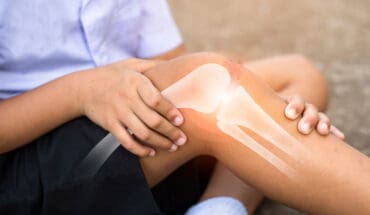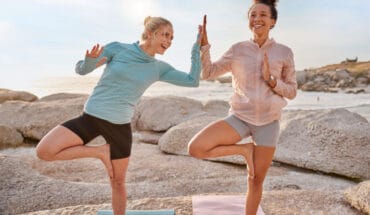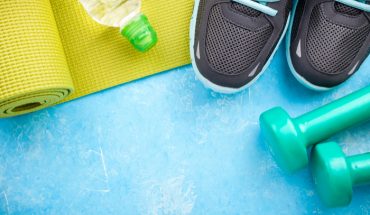The gruesome snapping sound of a leg bone breaking will be one of the memorable moments of the Rio Olympics – not least for the hapless French gymnast Samir Ait Said who suffered the injury when he landed badly on the vault.
Many other world-class athletes have already had their dreams of medals dashed by injuries and some never made it at all to Rio, such as Australia’s champion hurdler Sally Pearson who damaged a hamstring in training.
Here, we talk to two leading Olympic physios about how any athlete – whether you are competing or watching the Games this year – can avoid sports injuries developing in the first place.
Make sure you have the proper gear
This, of course, depends a bit on your sport, according to Nicki Combarro, physiotherapist with Team GP at Rio 2016. “If you are riding a bike – a helmet is important for obvious reasons – to protect your head should you fall off. If you are just going walking or jogging, think about wearing lightweight breathable fabrics, tracksuit bottoms that you can move in.”
Plimsolls may be fine for sailing, but they are not going to cut it if you run regularly on hard surfaces. “Inappropriate footwear is the cause of many preventable sports injuries, from shin splints to runner’s knee,” says Simon Rice, a specialist muscol-skeletal physiotherapist. Shin splints, the painful condition caused when muscle is pulled loose from the shin bone, is easily prevented by supporting the arch of the foot. “One muscle responsible for raising the arch of the foot attaches to the side of the shin bone. When the arch collapses with each foot strike, it can develop micro tears where it attaches to the bone causing pain,’ explains Rice.
“Investing in athletic footwear that is suitable to your foot type can help to solve the problem, although you may also need some physical therapy,’ says Rice.
Always warm up well
Cold muscles can tear more easily when put under stress than warm, pliable ones. Unfortunately, many people neglect warm-ups, perhaps because they are pushed for time. “The result is a lot of unnecessary injuries,” says Rice. Instead, spend at least 10 minutes warming your muscles doing simple stretching exercises such as gentle jogging on the spot and squats and lunges.
Strengthen your core
If your core stomach and back muscles are weak, you are much more likely to suffer from a strained lower back injury at some point. “Athletes do a lot of conditioning work on their core stability so are less prone to problems than people who are just keeping fit,’ says Nicki Combarro. “For the general population without back pain, the best option would be to do a Pilates class or speak to a gym instructor. It is important to get the exercises right in order to get the benefit.”
Stay hydrated
It is important to drink plenty of fluids when you are exercising, not least because dehydration can lead to painful cramps because the muscles are starved of essential salts. ‘ Water is enough if you are exercising for a short period of time. If you exercise for longer than 60 mins you start to deplete the stores of glygocen in your muscles, which is what your muscles use for energy. A sports drink will help to replenish these stores and allow you to continue training,’ says Rice.
Don’t overdo it
“If you are just starting out exercising gauge how are you are working by the talking test,” advises Nicki Combarro. “Can you exercise and hold a conversation comfortably at the same time? if so you can probably work harder with your exercise.”
Always best to consult your GP if you are new to exercise and are worried about your general health
Tendonopathy is a common sports injury that often occurs from overuse and can cause deep, nagging pain that is caused by a change in the structure of tendons. Treating this condition consists of rest, medication, physical therapy or changes to equipment or technique. Stress fractures in the leg are often the result of overuse or repeated impacts on a hard surface
If you get hurt, stop training
Running through an injury is not a good idea – and leads to more damage. “If you are in pain or feel something is not right, stop immediately and see if the problem resolves,” says Rice. In the first 48 hours, the goal is to limit the bleeding and tissue damage,’ says Rice. ‘Rest the area. Apply ice to the injury 15 minutes out of every hour, compress and elevate the injured area to try and limit the bleeding.’ It is important to avoid massage, heat and alcohol in the first 48 hours after an injury as this will make the area bleed more.
Pick your sport
If you are older or starting an exercise regime from scratch, it is best to avoid high-impact sports. The most common high impact sport that leads to injury is running but skateboarding, mountain biking, tennis, skiing, basketball, gymnastics and football need to be treated with caution too.
“Swimming, cycling and brisk walking are low impact, and cycling can be done on static bikes in a gym to make it safer for beginners,” says Combarro.
Take advice
Don’t treat yourself. If you suspect you have a sports injury, go to your doctor or a specialist sports injury clinic. ‘Seeing a professional in the area will result in an accurate diagnosis and a quicker return to activity. If there is a biomechanical component to your injury this can be identified and addressed so the injury will return,’ says Rice.
- Biden Declines Second Term: Health Concerns - 23rd July 2024
- New catheter coating stops bacteria cells from swarming - 10th June 2024
- AI-designed catheters could dramatically reduce urinary tract infections - 10th June 2024






